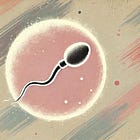Time for a Shift in the ‘Gender-Affirming Care’ Debate
The problem with sex-trait modification isn’t just the lack of evidence of benefit—it’s the pseudoscience at its core.
Reality’s Last Stand is a reader-supported publication. Please consider becoming a paying subscriber or making a one-time or recurring donation to show your support.
About the Author
Dr. Colin Wright is the CEO/Editor-in-Chief of Reality’s Last Stand, an evolutionary biology PhD, and Manhattan Institute Fellow. His writing has appeared in The Wall Street Journal, The Times, the New York Post, Newsweek, City Journal, Quillette, Queer Majority, and other major news outlets and peer-reviewed journals.
The last four months have been a whirlwind of change in the gender debate. Just eight days into his second term, President Donald Trump signed an executive order provocatively titled “Protecting Children from Chemical and Surgical Mutilation.” It declared that the United States would no longer “fund, sponsor, promote, assist, or support the so-called ‘transition’ of a child from one sex to another.” The order arrived as the Supreme Court was deliberating U.S. v. Skrmetti, a pivotal case challenging Tennessee’s ban on sex-trait modification procedures for minors.
As the U.S. enters an era of legal warfare over pediatric “gender-affirming” care, it’s time to shift the terms of debate from outcomes to the foundational premises of the practice.
I have served as an expert witness for several court cases on gender-affirming care. These courtroom debates fixate almost entirely on whether the treatments show evidence of benefit.
This is a mistake.
True, the evidence is almost nonexistent. Last year, British authorities released the Cass Review, a devastating critique of the evidence supporting pediatric sex-trait modification. The report was grounded in seven systematic evidence reviews—the gold standard in evidence-based medicine. One of the reviews, consistent with the others, described the evidence in favor of “gender-affirming treatment” in children and adolescents as “remarkably weak.”
But while it’s not wrong to highlight this evidentiary void, focusing solely on outcomes cedes too much ground to proponents by implying that outcomes alone could legitimize the practice of gender transition. The deeper flaw in gender-affirming care lies not in the data but in their premises. If the foundational assumptions used to justify these treatments collapse under scrutiny, the interventions would remain unjustifiable, even if some evidence of benefit eventually emerged.
At its core, gender-affirming care rests on two claims. First, it posits that biological sex is not a fixed binary but a malleable continuum, shaped by traits like sex chromosomes, hormones, genital morphology, and other physical characteristics—most of which doctors can alter with hormones and surgeries. Second, it asserts that a person can have a “brain sex”—equated with “gender identity”—that diverges from his body, creating a mismatch that drives gender dysphoria. The goal, then, is to align the body with this purportedly immutable “brain sex” through hormones and surgeries.
Both premises are scientifically untenable. Sex is not a spectrum. It’s a binary biological reality defined by reproductive function: males have the function to produce sperm, and females, ova. No hormonal or surgical intervention can change a person’s sex. Likewise, the notion that a person can have a “brain sex” incongruent with his body defies both biology and logic. Our bodies are an integrated whole, not a patchwork of independently sexed traits.
These unsound premises make gender-affirming care a house built on sand, not solid medical science.
Consider an analogy: exorcism might comfort a troubled patient who believes in demonic possession, but the practice’s legitimacy hinges on demons being real. Absent that, it’s a ritual, not medicine. Similarly, gender-affirming care presupposes both a “sex spectrum” and “brain sex,” which do not exist. No amount of reported benefit can salvage a practice rooted in pseudoscience.
This distinction exposes a contradiction among the defenders of gender medicine in U.S. v. Skrmetti. The litigants against Tennessee argue that bans on “gender-affirming” procedures for minors constitute a form of discrimination based on sex. The ACLU, representing private plaintiffs in the case, attempted to spotlight potential benefits of gender-affirming care while sidestepping the shaky premises, yet its legal arguments invoking sex discrimination implicitly relied on sex being concrete and immutable. This undermines the justification for the gender-affirming care it supports, which requires that sex be fluid and changeable. They can’t have it both ways.
The legal battle over gender-affirming care must shift focus. Legislation should not merely target procedures but dismantle the pseudoscientific terminology and concepts—“gender identity,” “brain sex,” and “sex assigned at birth”—that prop them up. Medical institutions must face accountability for embracing these falsehoods.
This is a rare moment to halt the medicalization of confused, distressed, and vulnerable youth. By attacking gender medicine at its ideological foundation, we can end this harmful practice.
This article was originally published in City Journal on April 22, 2025.
You made it to the end! Please consider upgrading to a paid subscription or making a recurring or one-time donation below to show your support. Reality’s Last Stand is a reader-supported publication, and your help is greatly appreciated.












I find it interesting and notable that the connections between pornography exposure and this confusion are not brought up in court. It's clearly difficult for the detransitioners who testify about the misleading path of what's euphemistically called "affirmative care" to tell how they were lured into sissy hypno porn through smart phones and friend groups, but the psychologists now treating these unfortunate patients should be bringing this up. Why? Because it is an outside influence and obviously contradicts the trope of "wrong body since birth." I'm also stumped as to why no one is talking about the long accepted Piaget stages of child development, which also contradict this mythical early awareness of "wrong body." Toddlers in the age 3-6 phase, Pre-Operational in Piaget terms, do not have the language or cognition to express this clearly. Adults are interpreting and indoctrinating.
10-15 years ago, few people would be shy about saying that a movement which encourages kids to use breast binders, penis packers and penis tucking--let alone drugs and surgeries --is psychologically and physically abusive. Would we encourage kids to think they are born with the wrong face and tell them to put a paper bag over their heads?